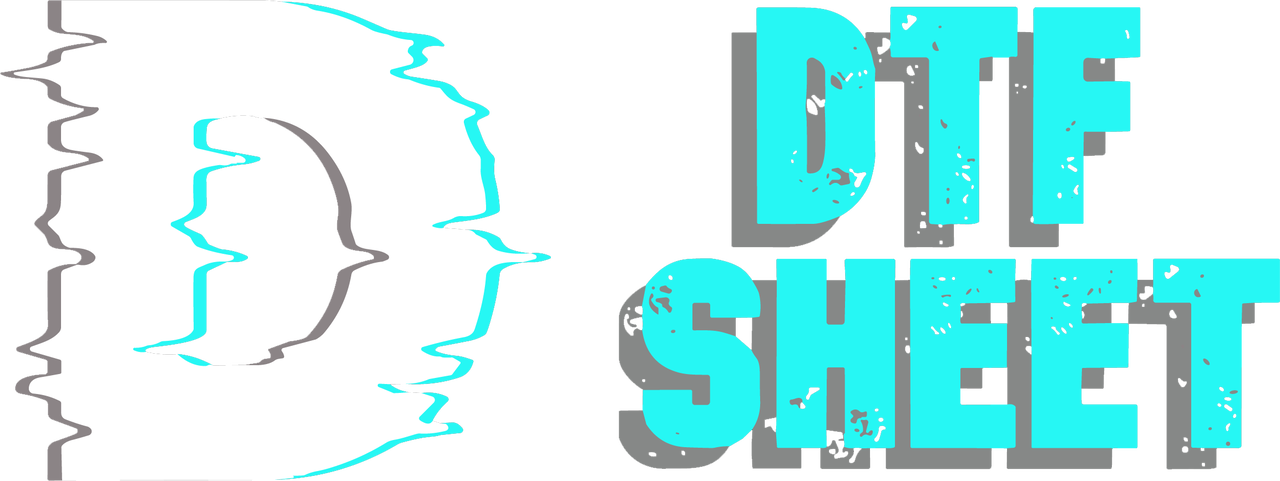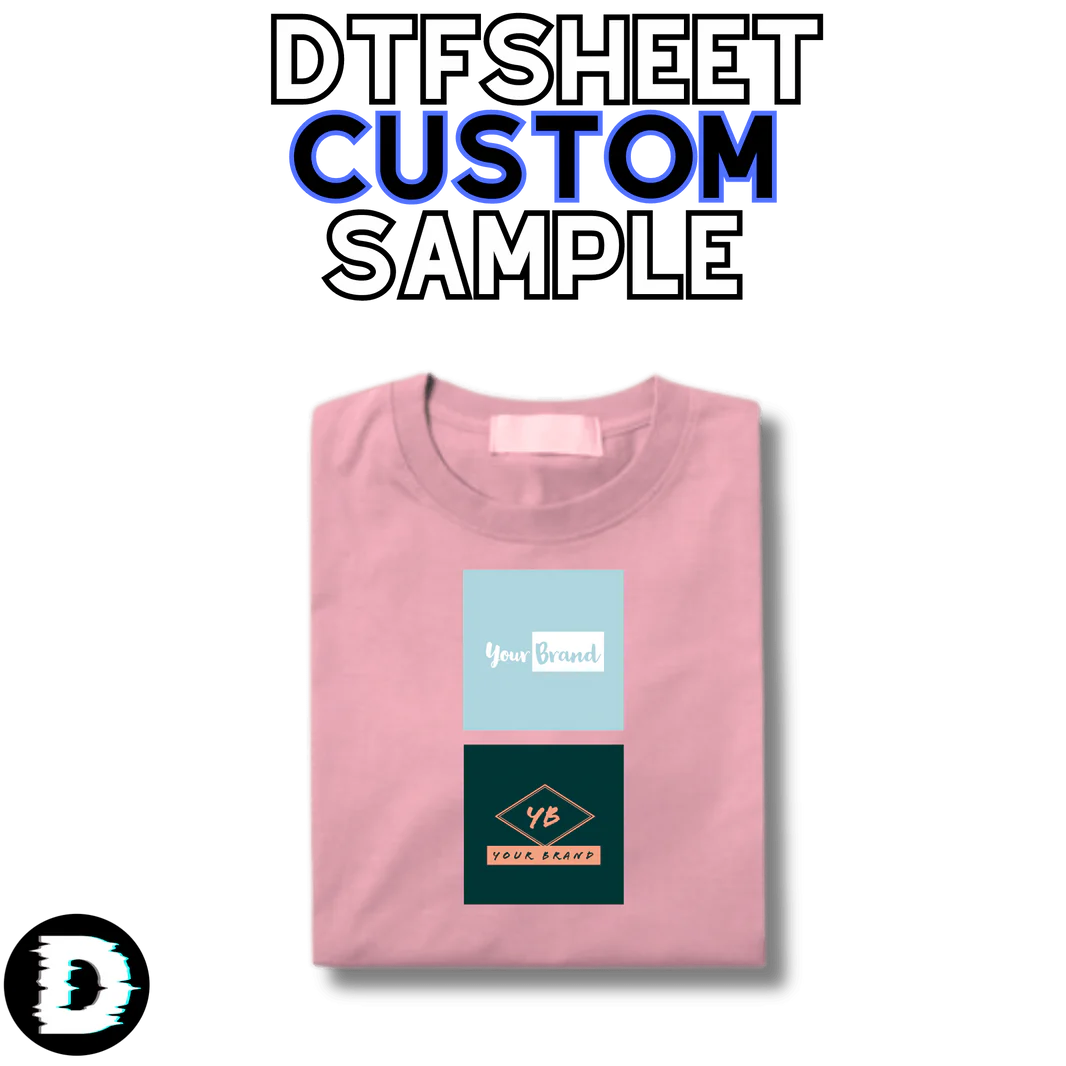Let’s just go ahead and say it: yes, DTF stands for Direct-to-Film. And yes, we know what else you're thinking — but we're here to talk about printing, not your group chat jokes. So if you’ve been seeing “DTF transfers” pop up all over your TikTok, print shop forums, or cousin’s Etsy store, buckle up. You’re about to find out why this tech is taking over the custom apparel world faster than a heat press on polyester.
What Does DTF Stand For?
DTF = Direct-to-Film, not Don’t Touch Fabric (but that also applies if the press is still hot).
Basically, DTF printing is a method where your design is printed onto a special film, coated with a magical powder (okay fine, it’s adhesive), and heat-pressed onto a shirt, hoodie, tote, you name it.
Unlike DTG (Direct-to-Garment), which requires your shirt to basically get a skincare routine before printing, or HTV, which makes you feel like you’re doing vinyl origami — DTF is faster, easier, and way less dramatic.
✅ Quick Definition: A DTF transfer is a full-color design printed on a film, covered in powder, then heat pressed onto fabric like a hot sandwich of awesomeness.
How Does a DTF Transfer Work?
Now, this part depends on whether you're a full-blown DTF wizard with your own printer setup, or someone who prefers the “I just want to press and impress” method using pre-printed transfers.
If You Own a DTF Printer:
Congrats, you're the ambitious type. Here's how the DTF process goes:
-
Print That Beauty
Print your design directly onto a PET film using DTF ink. Think of it like a tattoo, but for shirts, and without the regret. -
Sprinkle That Powder
While the ink’s still wet, cover the back in hot melt powder — this is what makes it stick. It’s like powdered sugar, but instead of going in your mouth, it bonds fabric. Don’t eat it. -
Cure That Thing
Toss it under a heat press (hovering only, don’t get handsy) or into a DTF oven until it looks nice and melted. Kinda like s’mores, but for apparel. -
Press and Flex
Position the film on your shirt, press it at about 300°F for 10–15 seconds, and then wait for the magic. -
Peel and Reveal
Hot peel, cold peel, emotional peel — your supplier will tell you what kind. Bonus points for giving it a second press for that smooth, matte finish.
If You're Using Pre-Printed DTF Transfers:
AKA “The Easy Mode.” All you need is a heat press and good taste.
-
Place the Transfer
Smack it on the shirt where you want the magic to happen. -
Press That Baby
Follow the supplier’s settings. Usually around 300°F for 10-15 seconds. Feel free to hum the Jeopardy theme while you wait. -
Peel and Boom
The moment of truth. Peel the film, admire your work, and accept the compliments that are definitely coming your way.
✅ Pro Tip: Using a supplier for your DTF transfers means no powdery mess in your workspace or “oops I melted it again” moments. Just press, peel, and profit.
Advantages of DTF Transfers
Why’s everyone suddenly obsessed with direct to film printing? Because it’s basically the cool kid on the printing block.
-
✅ Works on cotton, polyester, canvas, unicorn hair — okay not that last one, but almost everything
-
✅ No pre-treatment needed (unlike DTG, which basically wants a spa day first)
-
✅ Colors so bold they’ll high-five your eyeballs
-
✅ Stretches like yoga pants and holds up to washes like a champ
-
✅ Perfect for small runs, big dreams, and last-minute orders
When it comes to DTF vs screen printing, DTF wins in setup time, color complexity, and not smelling like a vat of plastisol.
DTF vs Other Printing Methods
Let’s settle this once and for all with a chart (because everyone loves a good visual breakdown):
| Method | Works on All Fabrics | Color Vibrancy | Cost-Effective for Small Runs | Requires Pre-Treatment | Setup Time |
|---|---|---|---|---|---|
| DTF | ✅ Yes | ✅ Ultra | ✅ Heck yes | ❌ Nope | ✅ Fast AF |
| Screen Print | ❌ Not really | ✅ High | ❌ Only big orders | ❌ Nah | ❌ Slow |
| DTG | ❌ Mostly cotton | ✅ Meh | ✅ Decent | ✅ Ugh, yes | ✅ Medium |
| HTV | ✅ Yes | ❌ Low | ✅ Okay | ❌ Nope | ✅ Medium |
TL;DR: DTF is the best transfer method for shirts that don’t have time for drama.
What Do You Need to Make DTF Transfers?
If you're going full DIY DTF mode, here’s your shopping list:
-
A DTF printer (duh)
-
PET transfer film (not the pet that purrs)
-
DTF inks (CMYK + white — because white ink is your design’s wingman)
-
Hot melt powder (the magic stuff)
-
A heat press (the holy grail)
-
Optional: A DTF oven (because sometimes fancy is fun)
Want to skip all that and still look like a pro? Just grab DTF supplies from a reliable seller and start pressing pre-made transfers.
What Makes a High-Quality DTF Transfer?
Not all transfers are created equal. Here’s what separates the pros from the “meh”:
-
Crisp, sharp edges (no blur, no fuzz — just ✨clean✨)
-
Bold colors that pop louder than a bag of chips in a quiet room
-
Smooth texture, not gritty like a cheap beach towel
-
Wash-resistant and stretch-friendly
-
A finish so nice you’ll want to pet it (but please don’t)
Common DTF Mistakes and How to Avoid Them
We’ve all been there. Here’s what not to do if you don’t want to cry into your blank t-shirts:
-
❌ Under-curing the powder = weak stick. Don’t be stingy with the heat!
-
❌ Using off-brand ink = sad colors and ghosting. Your design deserves better.
-
❌ Wrong press settings = fabric heartbreak. Follow instructions like your shirt depends on it (because it does).
✅ Bonus tip: Always test a transfer on a scrap shirt before going full-on Etsy launch mode.
Who Should Use DTF Transfers?
Honestly? Pretty much anyone with a pulse and a passion for custom gear. But especially:
-
🛍️ Side hustlers who sell on Etsy or Instagram
-
🎨 Artists who want their designs on merch without breaking the bank
-
🧢 Print shops looking for low-minimum, full-color options
-
💼 Small business owners who like fast turnarounds and happy customers
If you can use a heat press and align a sticker, you can use a DTF transfer.
Is DTF Right for You?
If you love vibrant prints, stretchy designs, and not having to spend 3 hours setting up a screen printer — then yes. Yes, DTF is right for you. Whether you’re printing one shirt or a hundred, it’s like having a cheat code for apparel customization.
Want to try it before you commit? Grab a free sample pack and get your hands on some high-quality DTF magic. (Warning: You might fall in love.)
FAQs About DTF Transfers
What does DTF mean in printing?
Direct-to-Film — the superhero of shirt decorating.
Is DTF better than screen printing?
For full-color, fast-turnaround, small-run jobs? Absolutely.
Can DTF be used on cotton?
Yep. And poly. And blends. It’s not picky.
How long does a DTF transfer last?
Wash after wash, it stays strong — just don’t bleach it like it insulted your laundry.
Can I do DTF at home?
You sure can! Whether you're full DIY or using pre-made transfers, you’ve got options. Just don’t forget the heat press.
Ready to Press Play on Your Creativity?
(Okay fine — that was a pun.) But seriously, DTF transfers are the easiest way to take your custom apparel game from “meh” to “heck yes.” Whether you’re starting a business or just want your dog’s face on a sweatshirt, DTF’s got your back (literally).
Now go make something awesome. And press like you mean it.




























